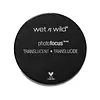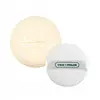What's inside
What's inside
 Key Ingredients
Key Ingredients

 Benefits
Benefits

No benefits
 Concerns
Concerns

No concerns
 Ingredients Side-by-side
Ingredients Side-by-side

Silica
AbrasiveZinc Oxide
Cosmetic ColorantBis-Hydroxyethoxypropyl Dimethicone
EmollientAluminum Starch Octenylsuccinate
AbsorbentSynthetic Fluorphlogopite
Triethoxycaprylylsilane
Glyceryl Caprylate
EmollientCaprylyl Glycol
EmollientCI 77492
Cosmetic ColorantWater
Skin ConditioningCentella Asiatica Extract
CleansingTocopherol
AntioxidantNiacinamide
Smoothing1,2-Hexanediol
Skin ConditioningSodium Hyaluronate
HumectantGlycerin
HumectantButylene Glycol
HumectantCitrus Junos Seed Extract
AntioxidantHippophae Rhamnoides Fruit Extract
Skin ConditioningAscorbic Acid
AntioxidantMadecassoside
AntioxidantAsiatic Acid
Skin ConditioningAsiaticoside
AntioxidantPropolis Extract
Skin ConditioningMadecassic Acid
Skin ConditioningSilica, Zinc Oxide, Bis-Hydroxyethoxypropyl Dimethicone, Aluminum Starch Octenylsuccinate, Synthetic Fluorphlogopite, Triethoxycaprylylsilane, Glyceryl Caprylate, Caprylyl Glycol, CI 77492, Water, Centella Asiatica Extract, Tocopherol, Niacinamide, 1,2-Hexanediol, Sodium Hyaluronate, Glycerin, Butylene Glycol, Citrus Junos Seed Extract, Hippophae Rhamnoides Fruit Extract, Ascorbic Acid, Madecassoside, Asiatic Acid, Asiaticoside, Propolis Extract, Madecassic Acid
 Reviews
Reviews

Ingredients Explained
These ingredients are found in both products.
Ingredients higher up in an ingredient list are typically present in a larger amount.
Caprylyl Glycol is a humectant and emollient, meaning it attracts and preserves moisture.
It is a common ingredient in many products, especially those designed to hydrate skin. The primary benefits are retaining moisture, skin softening, and promoting a healthy skin barrier.
Though Caprylyl Glycol is an alcohol derived from fatty acids, it is not the kind that can dry out skin.
This ingredient is also used as a preservative to extend the life of products. It has slight antimicrobial properties.
Learn more about Caprylyl GlycolCi 77492 is also hydrated iron III oxide. It's sole purpose is to give a yellow hue to products.
Iron III oxides are classified as inorganic chemicals for coloring.
Synthetically created Ci 77492 is considered safer than those naturally found. This is because the synthetically created version may contain less impurities. Iron oxides are generally non-toxic and non-allergenic.
Learn more about CI 77492Water. It's the most common cosmetic ingredient of all. You'll usually see it at the top of ingredient lists, meaning that it makes up the largest part of the product.
So why is it so popular? Water most often acts as a solvent - this means that it helps dissolve other ingredients into the formulation.
You'll also recognize water as that liquid we all need to stay alive. If you see this, drink a glass of water. Stay hydrated!
Learn more about Water